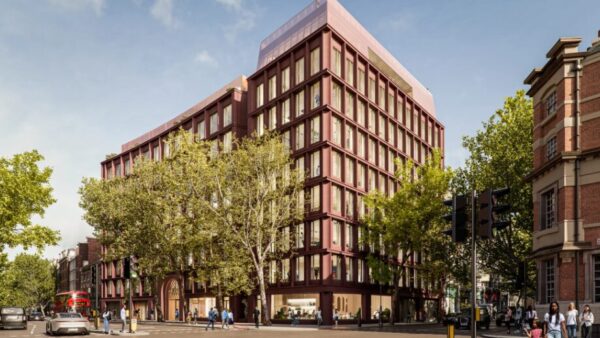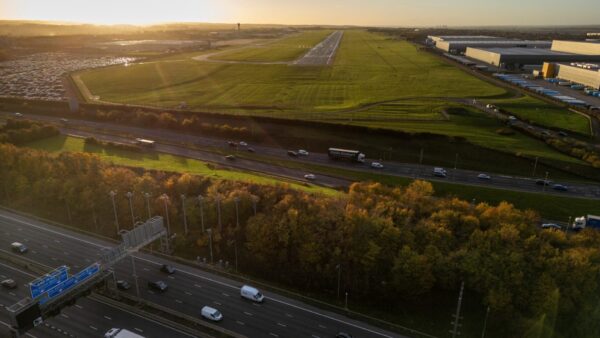
Image: De Montfort University
The news that scientists at De Montfort University (DMU) have created a 3D-printed brick from plastic waste with superior insulation properties to clay bricks generated huge interest among CM readers.
It also prompted a raft of questions in the comments section below the story, mostly relating to the brick’s cost and its fire resistance.
CM put those questions to DMU and now Dr Karthikeyan Kandan, senior lecturer in mechanical engineering at the university, who is leading the project, has come back with answers.
DMU pointed out that as an ongoing research project, the brick and the process to create has generated a foundation of work that can be built on in the future, and that the new brick wasn’t necessarily the final project.
It added that Dr Kandan is currently working on new prototypes in the laboratory which will then be tested in real-world settings. The university hopes to issue further updates on the work in the future.
What would it cost to make these bricks, compared to conventional clay bricks?
“We spent £6 to manufacture the proof-of-principle plastic brick using 3D printing. This could be further reduced to a cost as low as £1 if we were to mass produce the bricks using injection moulding – similar to the making of plastic water bottles. The plastic brick is an example, we can also fabricate panels according to the architectural requirement, which will minimise the cost of building a wall.
“The conventional red clay brick costs between £0.54 – £2.90. Often bricklayers are required to construct a wall. It can cost around £350-£400 for 1,000 laid bricks.”
How fire-resistant are they and also is there a danger of plastic toxic burning in case of fire?
“At elevated temperature, in excess of 200C, most of the plastic do emit toxic fumes known as VOCs (Volatile Organic Carbon). The combustion rate of plastic can be greatly improved by adding flame retardant additives and fire-breaker concepts. This can be easily incorporated by blending additives with plastic wastes.
“At present, we are using bio-degradable domestic plastic waste for fabricating the plastic brick. This plant-based plastic is much safer than the plastic made form petroleum-derivatives.”
Has anything been built (any prototype models, walls, small buildings etc) out of these bricks?
“Yes. We are testing prototype walls in laboratory conditions. These prototypes walls will be tested in field trials with our experimental full-scale house that we built in Nigeria for research purposes.”
What is the brick’s load-bearing performance?
The compressive strength of the plastic brick can be tuneable in the range of 2-50 N/mm2. For a comparison, the mean compressive strength of a clay brick is about 22.5 N/mm2.
Would be good to know the compressive strength is comparable with clay, and that the bricks are frost and UV stable in exposed applications?
We envisage that the plastic brick can be used in conjunction with standard construction materials. We aim to introduce the plastic brick/panel in cavity wall construction to provide a better thermal insulation. This will minimise the risk of fire or UV exposure, therefore, the plastic brick/panel will not degrade over time.
What are the structural properties of it like and how are bricks stuck together?
The plastic brick can be glued together with standard adhesive and sealants. We can also fabricate custom panels, thus minimise the number of joints, to enable construction of modular buildings. We are yet to explore the potential of joining with mortar and other materials with plastic bricks. We will be looking at this and hope to provide an update in the near future.
How strong are they?
“The plastic brick can meet BS 5628 for compressive strength performance, however, frost/UV/fire resistance tests needs to be performed to meet the building regulations. We are performing extreme environment tests to determine fire and UV resistance of plastic brick/panel. We anticipate we will be able to provide an update in around six months’ time.”
Can these bricks only be created by additive manufacturing?
“We used additive manufacturing to establish the thermal performance of the plastic brick with a range of lattice architecture. We will use injection moulding for mass production of plastic bricks/panels.”
Are these commercially available yet?
“We envisage that the plastic brick could be commercially available in the next two years. This time is required to perform stringent laboratory and field tests and trials to meet the building regulations. Because we will use injection moulding for mass production of plastic bricks/panels, the cost and time of the manufacturing process is greatly optimised to produce commercially viable plastic bricks, for which the cost will be less than traditional bricks.”
Comments
Comments are closed.











As an ex-brickie, now PM, I’m interested to know how they are laid, is it a traditional sand cement/lime mortar?
Fire resistance response – VOCs produced at around 200C. How many fires do you know that burns at or below 200C? Plastics made from flammable petroleum products or plant materials WILL burn and burn a lot hotter than wood or cloth. You might be able to change the flash point but it will still burn and furthermore, the burning materials will also drip flaming molten material that will spread the fire. This is absolute madness. Have we not learnt anything in the last two years?